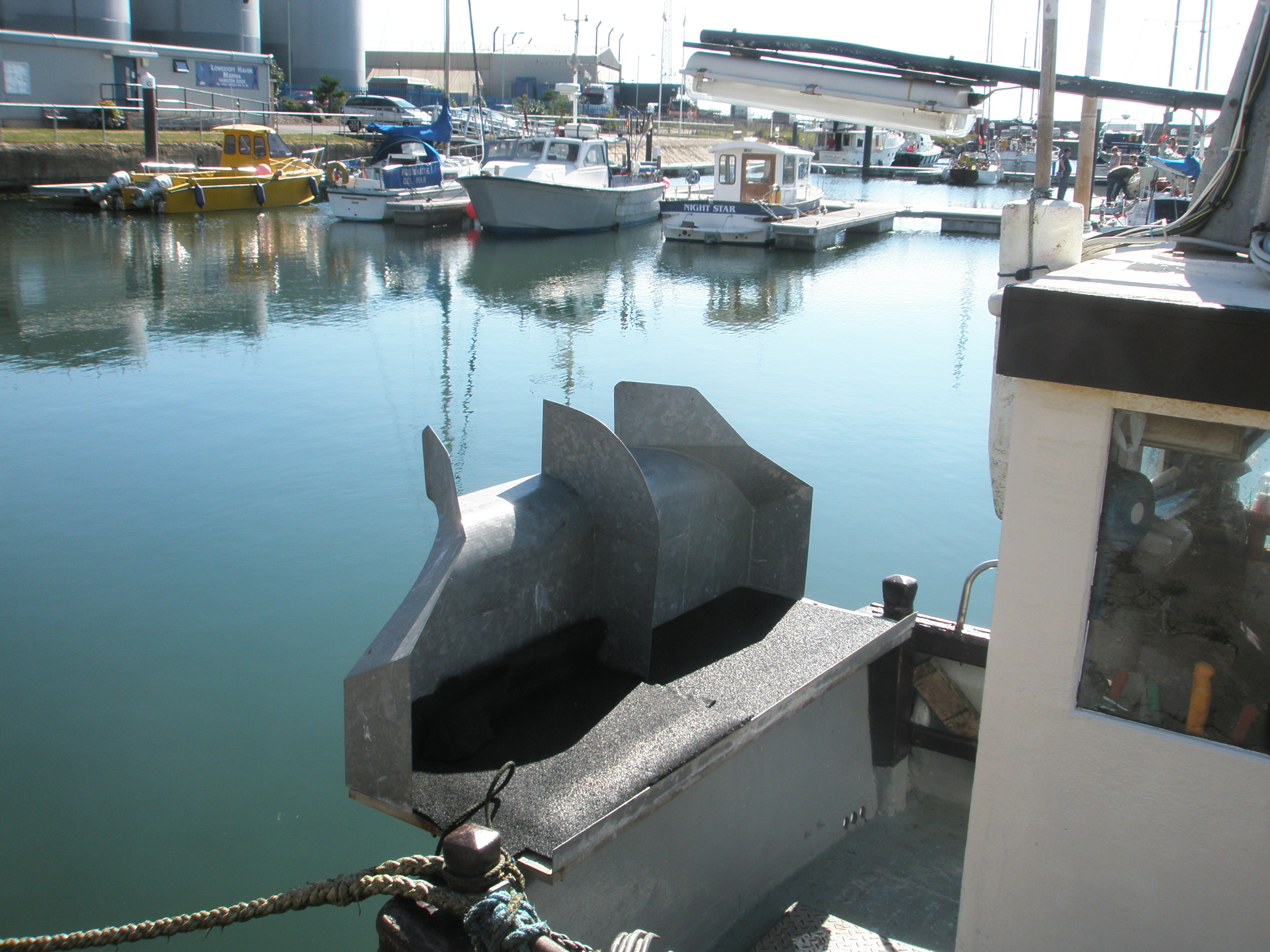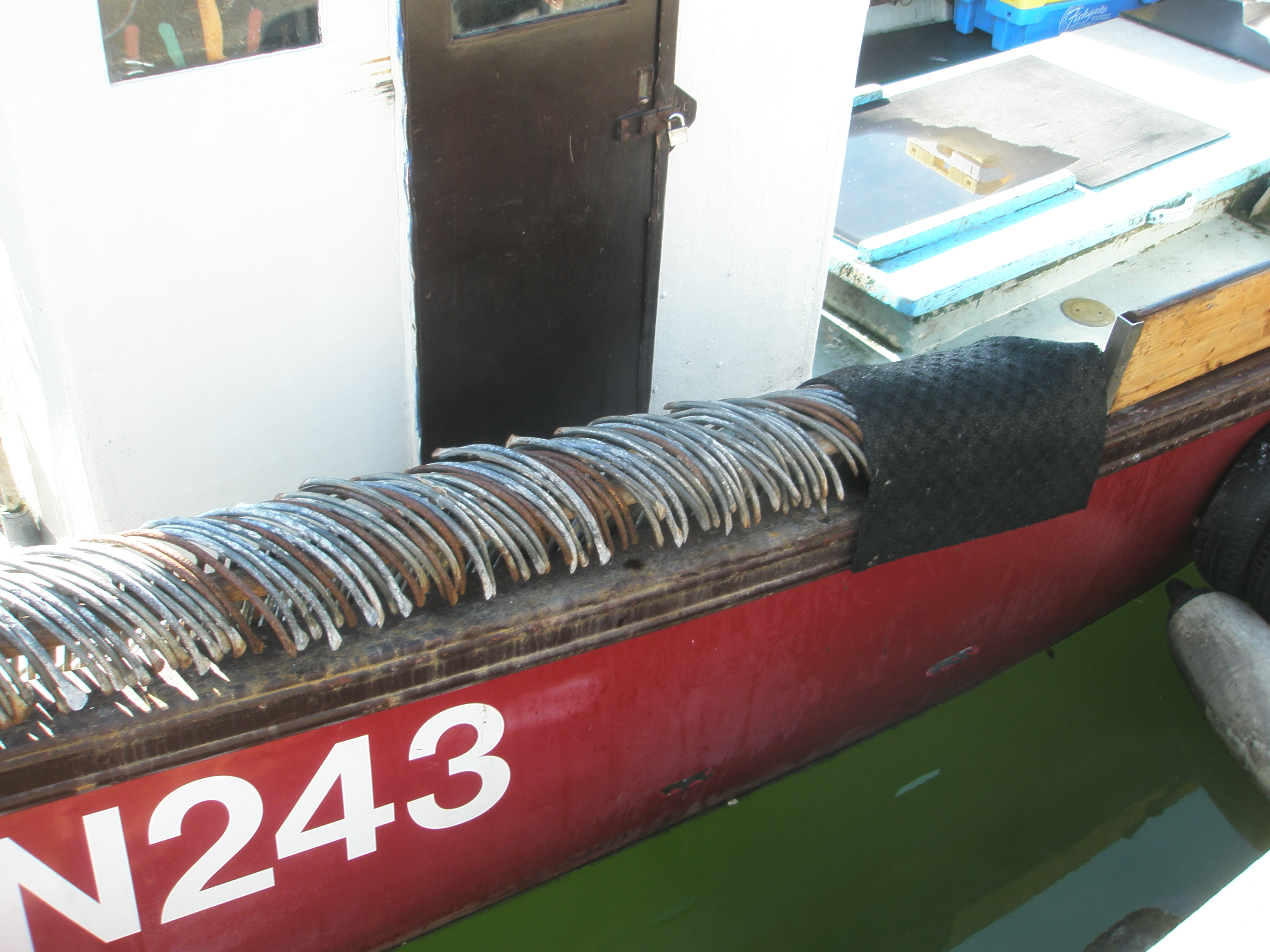Small Line
Summary
This fishing method is similar to longline fishing but adapted to suit the smaller inshore vessels. The ‘small lines’ are made up of a long length of heavy twisted twine or thick monofilament twine usually between 100 – 500 metres long. Short lengths of lighter twine called snoods with hooks on, are attached to this line at regular intervals. Each line may have in the region of 200 baited hooks on. The lines will have a small anchor at either end and in some cases intermediate anchors to minimise movement of the line on the seabed.

Environmental impact
Small lines will have very little environment impact. The only seabed impact should be from the small anchors and this will be very localised. Unwanted by-catch is kept to a minimum by using a specific size and type of hook to suit the target species. Using the skippers knowledge and experience, the lines are set in areas and at times where it's expected that there will be an abundance of the target species on the specific fishing grounds. This helps minimise unwanted by-catch.
If there is any unwanted by-catch it can usually be returned to the water while still alive and unharmed. The inshore lines see very little interaction with seabirds or marine mammals.
Other information
Inshore small line fishing is operated by small boats at various ports around the UK, often on a seasonal basis when the fish are expected to be feeding on the inshore grounds. It is very much weather dependant due to the size of boats used. Lining is a very time consuming operation as all the hooks have to be baited by hand before going to sea. Mackerel, squid or herring are common baits for the inshore boats, they will have different favourite baits for different species but often it is down to whatever they can get regular supplies of. The bait has to be fairly robust so that it stays on the hook during shooting the gear and getting to the seabed.
The lines are baited and carefully stowed in a large tub or plastic box with the baited hooks hung around the edges already to shoot away straight from the box. These plastic tubs are the modern equivalent of the large wicker baskets, often called creels, that used to be used to stow lines in.
The lines are shot slowly over the stern of the boat, first a dhan (bouy) to mark the end of the line, this is followed by a length of rope, and then the anchor with the end of the line attached. The line is then run out its full length followed by the second anchor and dhan to mark the other end of the line. Some fishermen use intermediate small anchors, as well as the ones at each end of the line, spaced out along the lines to prevent the line moving about too much with the currents on the seabed. The boat will probably shoot several lines then wait until they think the lines have had long enough to fish, this is termed the soak time. The ‘soak’ time is often determined by the tides or the time of day as fish tend to change their feeding habits with changes in tide or daylight or darkness.
The gear is hauled usually using a line hauler mounted forward on the vessel but some of the smaller vessels may still haul by hand. Fish are unhooked as they come onboard and stored before gutting, washing and preparing for the days market. The lines fall into another tub and are taken ashore to bait for the next day’s work. Baiting the lines can be a long laborious job, sometimes take as long to do as it takes to shoot and haul the gear at sea.
The fish landed by inshore line boats will be in prime condition as its usually landed every day and it has been caught and taken onboard within a few hours and without any rough handling to cause abrasion or bruising of the flesh.



Gear classification
Main target species (UK)
-
- Bass
- Cod
- Dogfish
- Haddock
- Halibut
- Ling
- Pollack (Lythe)
- Skates
- Turbot
Possible bycatch
-
- Any demersal species
- Juveniles of the target species